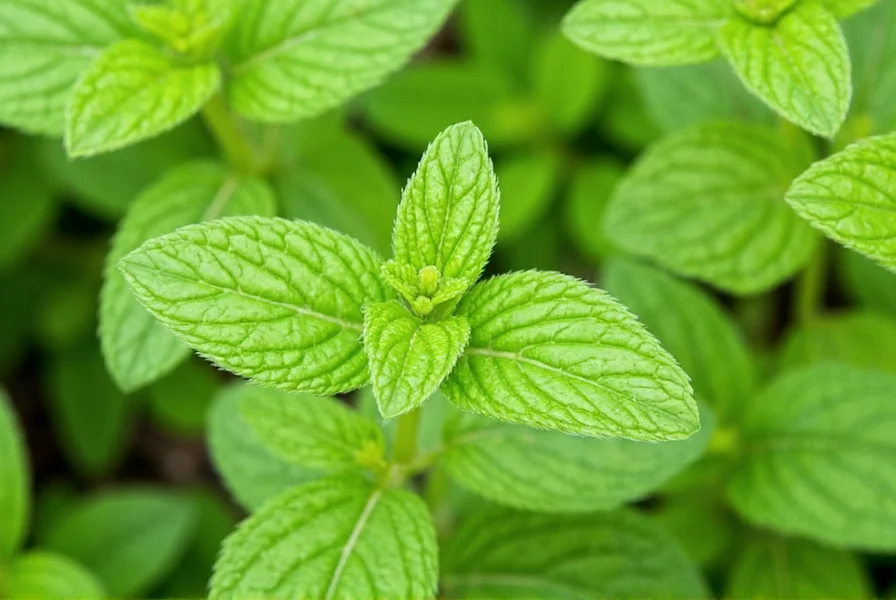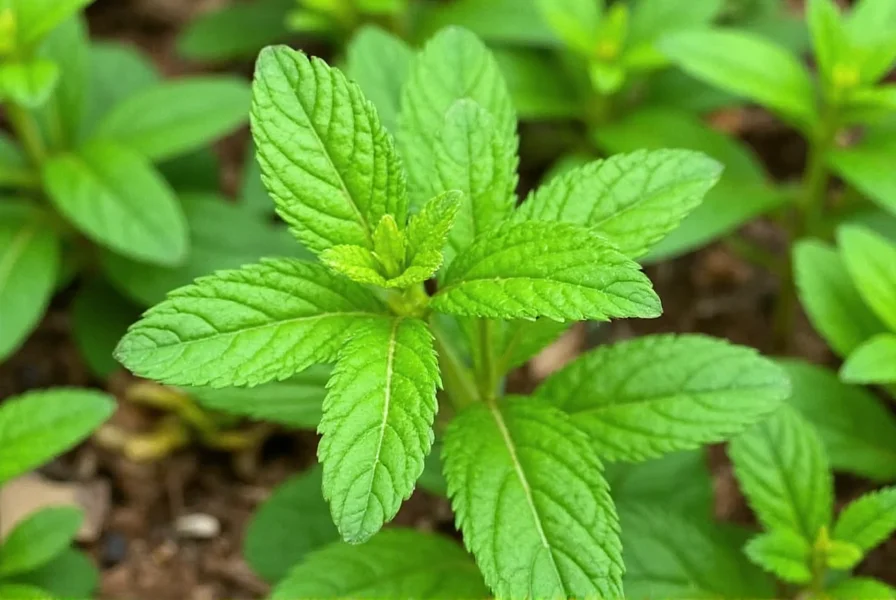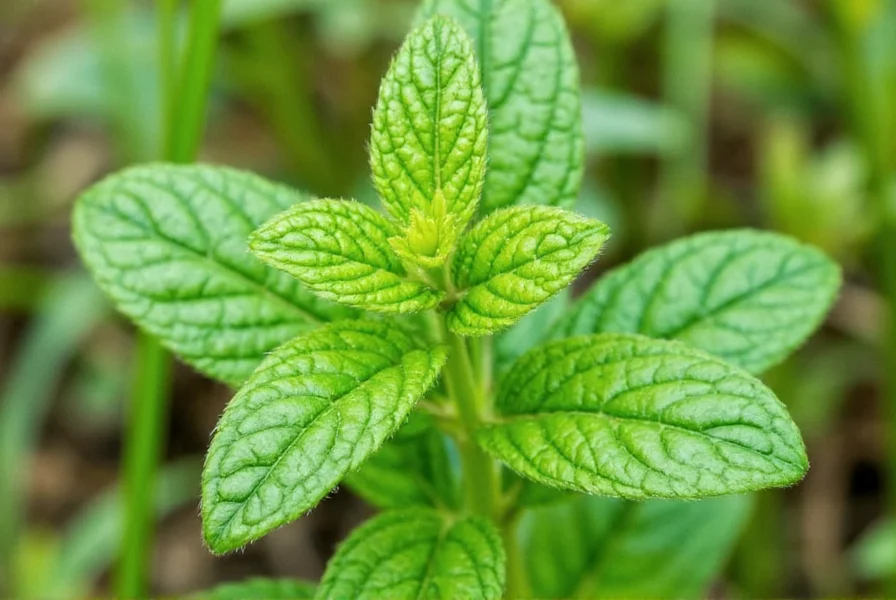Ginger mint herb, scientifically known as Mentha × gracilis, stands out among mint varieties for its unique flavor profile that combines traditional mint freshness with warm, spicy undertones reminiscent of ginger. This natural hybrid between spearmint (Mentha spicata) and Scotch mint (Mentha suaveolens) offers gardeners and culinary enthusiasts a versatile herb with distinctive characteristics that set it apart from common mint varieties.
Unlike standard peppermint or spearmint, ginger mint delivers a more complex sensory experience with its spicy-sweet aroma and flavor. The plant features bright green, slightly fuzzy leaves with a subtle purple tinge along the stems, growing in the characteristic mint family's square stems. Mature plants typically reach 12-24 inches in height with a spreading growth habit that requires careful garden placement to prevent overtake of neighboring plants.

Understanding Ginger Mint's Unique Flavor Profile
The defining characteristic of ginger mint herb is its flavor profile, which contains subtle ginger-like notes without actually containing ginger compounds. This distinctive taste comes from specific terpenes and volatile oils in the plant that create a warming sensation similar to ginger, while maintaining the cooling menthol properties typical of mint family plants.
When evaluating ginger mint vs regular mint, the differences become apparent immediately. While common spearmint offers a straightforward sweet mint flavor and peppermint delivers intense menthol cooling, ginger mint provides a more nuanced experience with:
- A initial cooling sensation followed by subtle warmth
- Citrus undertones alongside the minty freshness
- Less intense menthol than peppermint
- More complex flavor that holds up well in cooking
Culinary Applications of Ginger Mint Herb
Ginger mint's balanced flavor makes it exceptionally versatile in the kitchen. Its unique ginger mint herb characteristics shine in applications where standard mint might be too one-dimensional. Professional chefs particularly value this variety for its ability to complement both sweet and savory dishes without overwhelming other ingredients.
For optimal flavor extraction in beverages, gently bruise the leaves before adding to hot or cold liquids. This releases the essential oils while preserving the delicate ginger-like notes that define this special mint variety. Ginger mint tea benefits include a soothing digestive effect with less intense cooling than traditional mint teas.
| Culinary Application | Recommended Use | Substitution Ratio |
|---|---|---|
| Teas & Infusions | Fresh or dried leaves for herbal tea | 1:1 for mint, use 25% more than ginger |
| Cocktails | Muddled in mojitos, juleps, or lemonades | 1:1 for standard mint varieties |
| Savory Dishes | With lamb, carrots, or in chutneys | Use 20% less than regular mint |
| Desserts | In fruit salads, sorbets, or chocolate dishes | 1:1 for mint, reduces need for ginger |
Growing Ginger Mint Herb Successfully
Understanding proper ginger mint plant care ensures a healthy, productive plant. Like all mint varieties, ginger mint thrives in moist, well-draining soil with partial to full sun exposure. The ideal growing conditions for ginger mint herb include:
- Soil pH between 6.0-7.5
- Consistent moisture (but not waterlogged)
- Partial shade in hotter climates
- Regular harvesting to encourage bushier growth
Many gardeners make the mistake of planting ginger mint directly in garden beds without containment, leading to the plant taking over garden spaces. For controlled growth, consider these ginger mint growing conditions approaches:
- Plant in containers with drainage holes
- Use root barriers in garden beds
- Grow in hanging baskets to contain spread
- Regular pruning to maintain shape and prevent legginess

Preserving Your Ginger Mint Harvest
Proper storage and preservation techniques maximize the shelf life of your ginger mint herb. Unlike some more delicate herbs, ginger mint holds up well to various preservation methods while maintaining its distinctive flavor profile.
For short-term storage, place freshly harvested stems in a glass of water and cover loosely with a plastic bag in the refrigerator. This method keeps ginger mint fresh for 7-10 days. For longer preservation, consider these methods:
- Drying: Hang small bundles upside down in a dark, well-ventilated space
- Freezing: Chop leaves and freeze in ice cube trays with water or oil
- Vinegar infusions: Create flavorful mint vinegars for cooking
- Syrups: Make simple syrups for cocktails and desserts
Ginger Mint in Traditional Practices
While not as extensively documented as peppermint or spearmint, ginger mint herb has been used in various traditional practices, particularly in regions where it grows wild. Historical records indicate its use in folk medicine for digestive support and as a mild sedative.
Modern research on ginger mint specifically remains limited compared to more common mint varieties. However, studies on mint family plants suggest potential benefits related to digestion and respiratory function. When exploring ginger mint tea benefits, it's important to note that most research focuses on peppermint rather than this specific hybrid.
Common Challenges in Ginger Mint Cultivation
Gardeners growing ginger mint herb may encounter several common issues. Rust, a fungal disease that appears as orange pustules on leaves, particularly affects mint plants in humid conditions. Aphids and spider mites also frequently target mint varieties.
Preventative care represents the best approach to ginger mint plant care. Ensure proper air circulation around plants, avoid overhead watering, and remove any affected leaves promptly. Organic insecticidal soaps work effectively against common pests without harming beneficial insects.
Conclusion: The Unique Value of Ginger Mint Herb
Ginger mint herb offers a distinctive flavor profile that bridges the gap between traditional mint varieties and warmer spice notes. Its culinary versatility, relatively straightforward growing requirements, and unique sensory characteristics make it a valuable addition to any herb garden or kitchen pantry.
Whether you're exploring ginger mint vs regular mint for cocktail recipes, seeking a more complex tea ingredient, or looking to expand your herb garden with something beyond the ordinary, this hybrid mint delivers a distinctive experience that rewards both gardeners and culinary enthusiasts. By understanding its specific growing conditions and optimal uses, you can fully appreciate what makes ginger mint herb special among the diverse world of mint varieties.
Frequently Asked Questions
Is ginger mint the same as regular mint?
No, ginger mint (Mentha × gracilis) is a distinct hybrid between spearmint and Scotch mint. It has a unique flavor profile with subtle ginger-like notes and warm undertones that differentiate it from common mint varieties like peppermint or spearmint, which have more straightforward cooling mint flavors without the spicy complexity.
Can I use ginger mint in place of regular mint in recipes?
Yes, but with adjustments. Ginger mint works well as a substitute for regular mint, though its more complex flavor means you may need to use slightly less. In savory dishes, use about 20% less ginger mint than regular mint. For beverages and desserts, a 1:1 substitution usually works well, as the ginger notes complement rather than overpower other ingredients.
How do I prevent ginger mint from taking over my garden?
Ginger mint, like all mint varieties, spreads aggressively through underground runners. The most effective prevention methods include planting in containers with drainage holes, using root barriers in garden beds (sinking pots 18 inches deep with the rim slightly above soil level), or growing in hanging baskets. Regular pruning and harvesting also help control spread by reducing the plant's energy for horizontal growth.
Does ginger mint have medicinal properties like other mints?
Ginger mint shares some properties with other mint family plants, including potential digestive benefits. However, specific research on ginger mint is limited compared to peppermint or spearmint. While it may offer similar soothing effects for digestion and mild respiratory relief, it shouldn't be considered a substitute for medically proven treatments. The ginger-like notes come from different compounds than actual ginger, so it doesn't provide the same anti-nausea benefits as true ginger root.
When is the best time to harvest ginger mint for maximum flavor?
Harvest ginger mint in the morning after the dew has dried but before the heat of the day, when essential oil concentrations are highest. The optimal time is just before flowering (typically late spring to early summer), as this is when flavor compounds are most concentrated. Regular harvesting throughout the growing season encourages bushier growth and more frequent harvests of tender, flavorful leaves.











 浙公网安备
33010002000092号
浙公网安备
33010002000092号 浙B2-20120091-4
浙B2-20120091-4